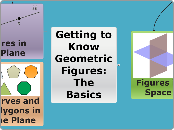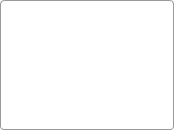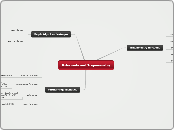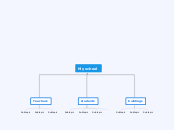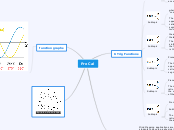For students ready for more advanced concepts on polygons than the video to the left, try this one! It includes a great introduction of definitions and mathematical language.
Another great video to help your students understand the different types of angles.
Euler's Formula
Euler's Formula: V + F = E + 2 where V is the number of vertices and E is the number of edges on a given polyhedron.
This video is a great way to help early elementary students start to become familiar with some of the basic 3D shapes!
Click play for a silly song to use with early elementary students to learn about the different polygons!
Angle Lesson Plan
Click "play" to learn more about angles!
Click "play" on the video to learn the basics of points, lines, and planes!
Getting to Know Geometric Figures: The Basics
This map is designed for pre-service teachers. Please use it as an opportunity to review the most basic concepts about geometric figures! The three branches of the map identify the three major categories of figures it will be important for you to teach your students. Beyond basic definitions, this map is a place to inspire you as you develop lesson plans arround these concepts. You will find videos to use in the classroom as well as activity/lesson plan ideas!
Related topics are color-coordinated for your convenience.
Curves and Polygons in the Plane
Polygons
Polygon: a simple, closed polygonal curve; defined by how many sides they have, or an "n-gon".
Examples include triangle (3 sides), quadrilateral (4 sides), pentagon (5 sides), hexagon (6 sides), heptagon (7 sides), octagon (8 sides), nonagon (9 sides), and decagon (10 sides).
Plane Shape Activity Ideas
Curves
Curves: lines that are either simple (they do not intersect with themselves), closed (having no defined end points), or simple closed (meeting both criteria).
Figures in the Plane
Rays and Angles
Ray: a subset of a line that includes one point on that line and all points on the line going in one direction from that first point.
Angle: the measure of space between two straight lines with a common end point, which is known as the vertex.
Lines
Line: two distinct point A and B uniquely determine a line AB. We know "AB" is a line without defined end points because it is written with an arrow facing both directions above it.
Line segment: the length of a line segment AB is the distance between points A and B and is written as AB. Line segments can be recognized by a straight line over the letters without arrows.
Point of intersection: where two nonparallel lines meet.
Points
Points: locations, usually noted by a capital letter such as "A" or "B".
Collinear points: 3 or more points are located on the same line.
Noncollinear points: points not located on the same line.
Plane
Plane: a two-dimensional flat object or a piece of paper that is infinite in all directions.
When we put figures onto a "plane", that figure is a geometric object that is made up by a set of points that are all a part of the object/shape/figure.
Figures in Space
Cones and Cylinders
Cone: simple closed curve in the plane (called a base) and a point that is not in the plane of this curve (this point is called the apex or vertex).
Cylinder: a simple closed surface generated by translating the points of a simple closed region in one plane to a parallel line.
Polyhedra
Polyhedron: simple closed surface formed by planar polygonal regions; as part of a polyhedra, these polygons are referred to as the shape's faces, the sides and the vertices of each of the faces are called the edges and vertices; includes prisms, pyramids, and the 5 regular polyhedra.
Regular Polyhedron: polyhedron that have a convex surface, faces that are congruent regular polygonal regions, and the same number of faces meeting at each vertex of the polyhedron; there are 5 kinds: tetrahedron, cube, octahedron, dodecahedron, and icosahedron.
Prism: a simple closed surface that consists of 2 congruent polygons in parallel planes together with the lateral faces join the bases (which are parallellograms).
Pyramid: a simple closed surface given by a polygon and a point not in the plane of the polygon (this point is called its apex).
Basics About Figures
Simple closed surface: a surface that does not have holes; its boundary edges enclose a region known as its interior.
Solid: a space figure that is the union of all of the points on a simple closed surface; also includes all interior points.
